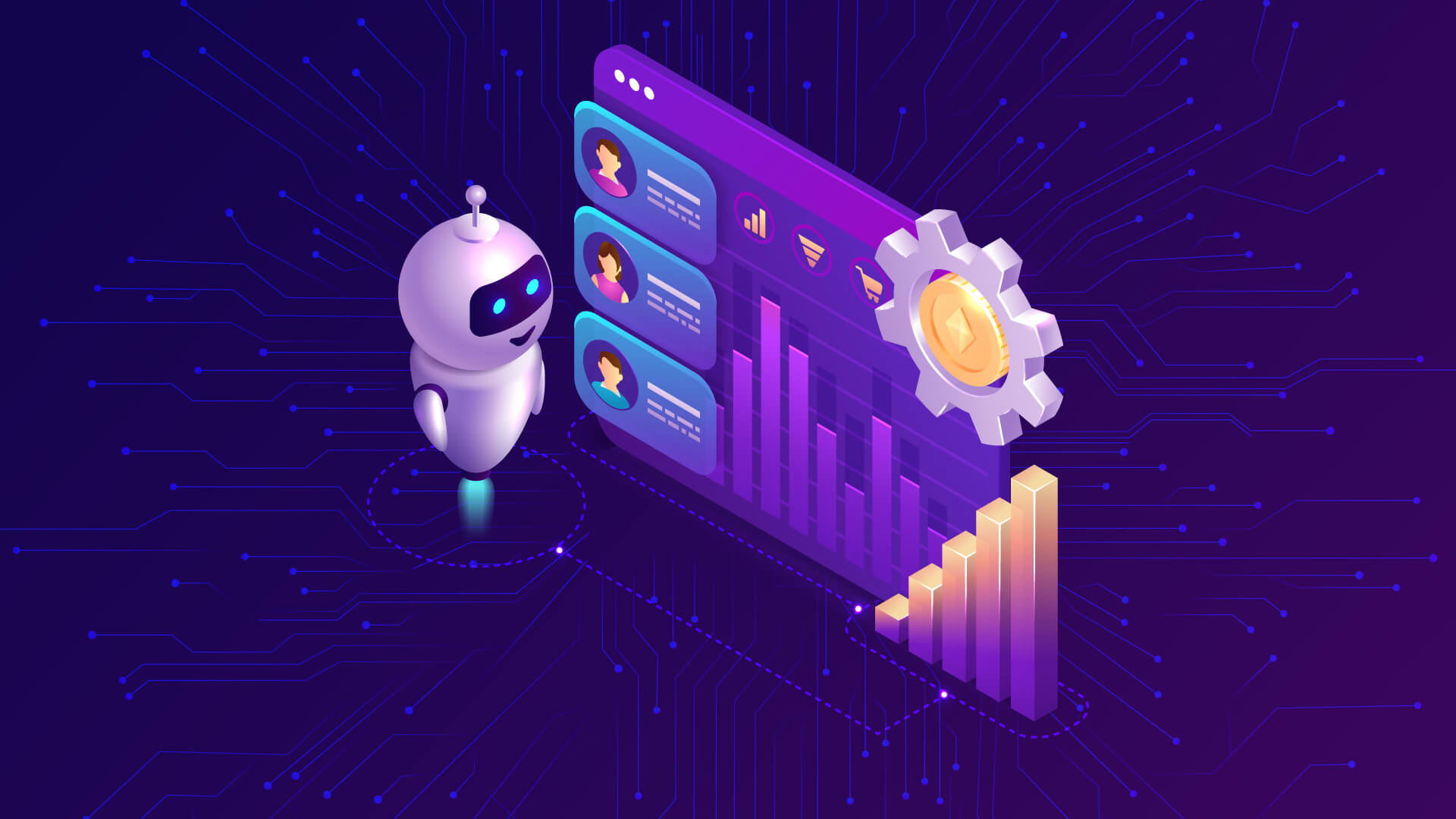AI Led Customer Data Platform (CDP) for Retail

A Customer Data Platform (CDP) for retail helps retailers build a 360 degree view of their customers. This is important to improve customer experience and enhance commerce activity.
In this blog, I wanted to highlight the difference between a CDP and a data lake, and then outline some key use cases in retail that you should pursue a CDP for.
CDP vs Data Lake – The Difference
Since they both are meant to ingest and store large amounts of data, are data lakes and CDPs the same? It turns out that the key difference is in the intent of the storage.
A data lake is meant to be a store of unprocessed data on which desired business intelligence will be built as needed. Typically, we have seen data streams from all parts of the enterprise sent directly to the data lake. The idea has been that we should capture everything that we can because we never know what special insights a piece of data can hold. Once we have all the data coming in, then we can sift through it and extract the insights that we need.
A CDP on the other hand is created with a deliberate purpose. The data is ingested after we have defined what we need based on the kind of analytics we want to build to serve a specific purpose. Since we are no longer looking for a needle in a haystack, arguably the time to create a CDP is much shorter. On the other hand, by being laser focused and building incrementally, there is always the possibility that we are leaving something of value out during the data integrations. For this reason, generally, data lakes will also co-exist in an enterprise.
Indeed, the purpose of a CDP is often the same business intelligence scenarios and AI use cases that a data lake would enable. But given the way it’s conceptualized a CDP provides quicker ROI. You could also think of a data lake powering a CDP as one of the many architectural approaches we may follow.
In both cases, Domo provides ready connectors to a variety of systems including online commerce, clickstream data, and transactional information from systems such as fulfilment systems and the ERP. These connectors allow us to expedite the time to market significantly. They also assist in performing systematic identity resolution so we can build holistic customer profiles.
What does a Retail CDP look like?
Our approach is to initiate a CDP program by clearly defining the purpose of the CDP. Then we select the right cloud platform, the right sources, the right Domo connectors, outline the Domo BI engine, and deploy the right AI modeling. This helps us make sure that we deliver ROI as soon as possible to the business while keeping the path open for incremental value development. The 5 layered customer data platform architecture program outlines our thinking on this.
For example, as we started to define our own Retail CDP solution as a Domo App, we started by speaking with clients about the top use cases they were looking for. The following 3 use cases surfaced as high priority. There is a Retail App that is provided by Domo already on their marketplace. It does a great job of demonstrating how dashboards can be deployed quickly to start yielding ROI. In this blog we’ll extend that concept to include AI and other uses as well.
Marketing Use Case for a CDP
With so much going on in the marketing technology with content management, dynamic pricing, churn prediction, and advertising on multiple channels, it has become imperative for brand managers and marketers to maximize the value of their martech investments.
A CDP is the perfect complement to the martech stack because it can not only provide aggregated information of a customer or a segment, but it can also quickly deliver predictive, and often prescriptive insights through AI to positively assist the customers in their journeys.
Intent-based targeting and analytics is a great use case to get the customers to ultimately complete their purchase. Using drop off and journey data available to us, combined with customer demographic data, we can not only encourage customers to take action, but more importantly we can improve customer journeys and address objections better.
For example, we helped a client pinpoint channel conflicts between multiple brands by effectively using multiple sources of data. By anonymizing and bringing the promotions data of multiple brands in one place, we were able to ensure that the customer segments were updated to reflect the brand positioning of the various products – premium vs value was the easiest one. In the absence of this analytics, the brands were not only realizing lower ROI on their spend, but they were also causing brand confusion in the minds of consumers.
Another great use case is of omni-channel commerce: when customers drop off online, we could continue the journey in the store and vice versa. Even when online, retargeting is a great way to keep customers engaged. A complementary technique is to use intent data and segmentation to predict recommendations on what customers might want next. Today’s recommendation engines are getting better but there is still a lot that can be improved. Domo provides connectors to a variety of marketing systems which accelerate the time needed to deploy effective analytics capabilities.
Store Analytics & Pricing Use Case
In any retail business which has multiple locations, it is important to keep track of store performance and the factors that drive it. It is also critical to understand how the pricing changes and promotions can influence commerce activity.
The readymade Domo retail app does a great job of providing you with dashboards around these important metrics. It has a ready dashboard that is powered by a well-defined schema. All we have to do is to ingest the data.
Ignitho’s solution builds on top of this solution by providing AI powered insights. This enables you to take prescriptive actions.
For example, one of the AI models is for customer insights which takes into account preferences, previous purchases, price sensitivity (based on promotions and price changes) etc. to predict the experience that will maximize customer experience and hence commerce potential. The model can also create a seamless transition between online and in-store activity.
However, AI models must also be used to yield real benefits. Using digital engineering with APIs and sometimes RPA, Ignitho’s cdp for retail solution then takes these insights and helps you integrate them with your online (e.g., commerce portal etc.) and offline (e.g., email marketing, etc.) customer engagement channels.
Supply Chain Use Case
Supply chain is often not considered a key CDP use cases in retail because very often the focus of a CDP is on marketing. That’s a big opportunity lost. In fact, supply chain optimization today is crucial to make sure a retailer appears responsive and well stocked.
For example, in an age of omni-channel delivery, tracking customer actions and purchases can ensure that we can keep optimal inventory in the right places without having to incur high carrying costs. Typical purchase offers such as “free shipping over orders of $50” often are in dire need of machine learning to reflect expected add-on purchases in the inventory levels across the value chain.
Then there is the universal problem of supply vs demand matching. These imbalances are often caused due to inherent latencies in the data supply between different systems. If we can sync multiple systems in a more real time way and propagate the insights from one system to another quickly, then the risk of over production, excess inventory carrying costs, and stockouts can be further optimized.
Ignitho’s retail CDP solution can extend right to the farthest point of your supply chain where retailers can feed real time information and prescriptive insights to the suppliers (manufacturers and distributors), their multiple locations, and their online customer engagement channels. Here is a nice overall approach to follow to enhance your supply chain analytics.
Next Steps
Ignitho’s retail CDP solution can be tailored to integrate with your technology choices. If you are looking to either introduce or maximize your adoption of Domo’s integration, BI, AI and enterprise app capabilities, then please get in touch. As a Domo partner, our approach is to delivery ROI as soon as possible by prioritizing the use cases and then delivering CDP capabilities in line with the overall architectural and business vision. Take our analytics maturity assessment to get a bird’s eye eview of how you stack up on various pillars of a solid data and analytics strategy. Please also consider signing up for our 2 hour CDP workshop available on the MS Azure marketplace. know more on cdp use cases media.
